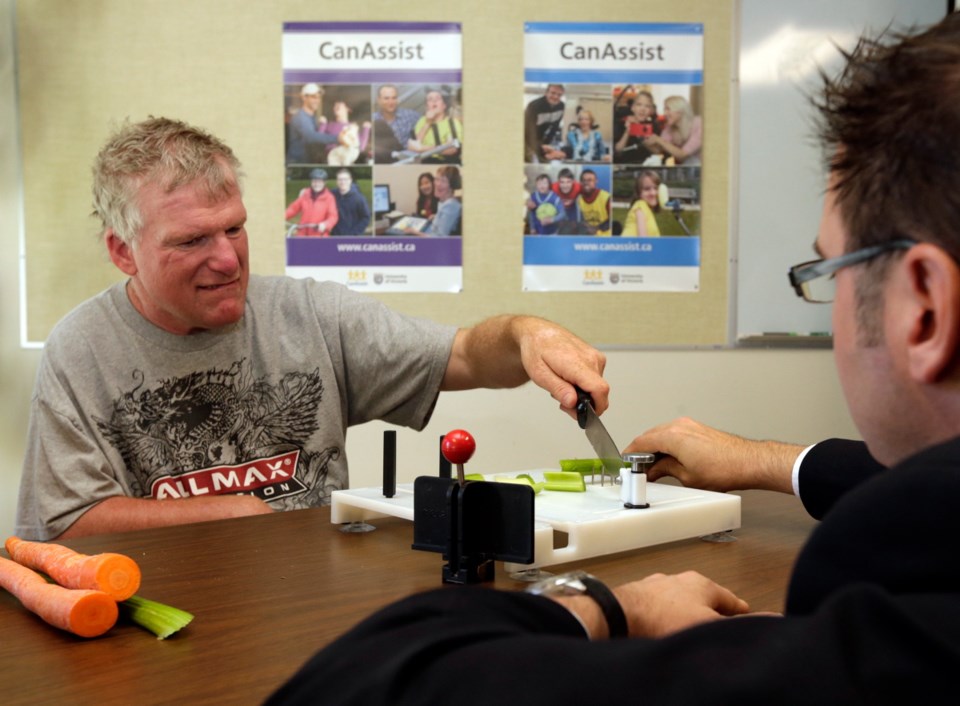Television remotes can be challenging for lots of people, but Kary Ashdown struggled more than most.
The 50-year-old Brentwood Bay resident, who has a developmental disability and limited use of one arm, often ended up frustrated with all the tiny buttons whenever he sat down to watch the Vancouver Canucks.
So when Ashdown’s support worker, Peter Linde, heard about the work of CanAssist at the University of Victoria, he applied to see if they could develop a simplified remote.
CanAssist has been working since 1999 to create practical, customized tools that help people with a wide range of disabilities.
Engineers, computer programmers and other researchers have found innovative ways to help people paint, cook, communicate, play video games and generally live happier, more independent lives.
In Ashdown’s case, CanAssist produced a radio frequency remote control with fewer buttons that allows the user to turn on the television without pointing directly at it.
Although a seemingly simple solution, it had a major impact on Ashdown’s life.
“With the simplified remote, he’s not getting angry,” Linde said.
“He’s able to control the volume and the channel, and that’s all he needs.”
CanAssist didn’t stop there, however; the agency also equipped Ashdown with a modified cutting board that allows him to chop vegetables with one hand.
The devices allows him to help prepare meals at the group home, which is operated by Community Living Victoria.
Ashdown also received the newly developed CanTunes software application that simplifies the playing of music on iPads.
“He’s able to lie in bed and play his music and he can have much more control over what he wants to listen to,” Linde said.
The tools were tailored to Ashdown’s needs with the help of a $100,000 grant from Community Living B.C., the government agency that oversees services to people with developmental disabilities.
Six other people in Greater Victoria also benefited. Each received from two to four pieces of technology to improve their access to recreation, help them communicate or increase their independence.
Three people received devices for mounting iPads on wheelchairs, chairs, beds and tables.
Others were given a software application called CanPlan that allows users to complete daily tasks by viewing step-by-step photographs on an iPad or iPhone.
CanAssist software manager Leo Spalteholz said the CanTunes app, which was developed this spring, proved a popular item.
“Everybody had a slightly different disability,” he said. “But basically what it came down to is they all loved music, but they had no way to control it themselves.
“Either because of a physical disability or a cognitive disability, they were not able to run an iPod or a CD player or anything. There were too many buttons, it was too complex, it was not accessible.”
The CanTune app, by contrast, allows people to have one-touch access to music on an iPad and eliminates extraneous buttons.
“You can add or remove features based on that person’s ability,” Spalteholz said. “You can have just two albums on the screen like Kary has or you can have as many as 20 on the screen at once.”
CanTunes is now available on iTunes for 99 cents. CanPlan is available free of charge.



